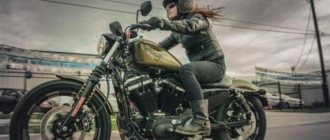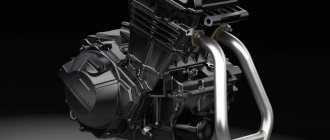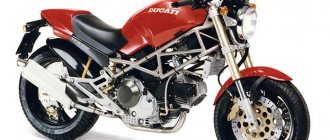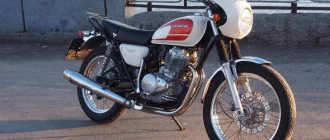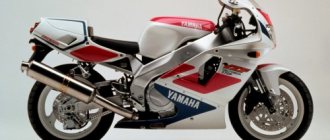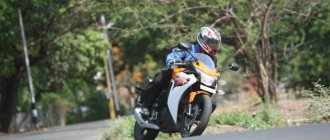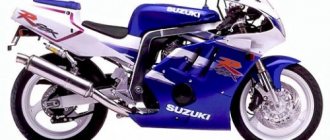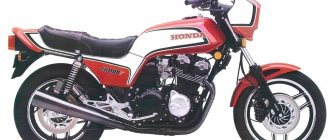Buell Motorcycle is an American manufacturer of hand-built sports motorcycles based in Grand Rapids, Michigan. Introduced in the early 1980s, the motorcycle company quickly became popular for its unconventional approach to design and manufacturing. Created to produce motorcycles solely for competition purposes, Buell changed its approach after the competition for which it produced motorcycles was cancelled. Hence the production of road motorcycles.
Known for their performance, innovation and adventure, Buell motorcycles are a needed upgrade in a market that demands variety. But the company did not come without struggle. Hard times at Harley-Davidson's parent company would lead to not only the cancellation of the $10 million Buell plant, but also the demise of the Buell brand altogether. However, the Buell brand seems indestructible as plans for its imminent return are at the highest level.
Founder of Buell
The Buell motorcycle company is the brainchild of American engineer Erik Buell. He was born in Pittsburgh, Pennsylvania on April 2, 1950. Eric learned to service cars at a young age and began riding motorcycles in his teens. Buell worked as a motorcycle mechanic during the day and studied engineering at the University of Pittsburgh at night.
After receiving his degree in 1979, Buell took a job at Harley-Davidson, and the experience he gained from this job later inspired him to create Buell Motorcycle in 1983.
Production in a garage
Many automobile companies that eventually achieved sales success and thus became major players had very humble beginnings, but Buell Motorcycle's beginnings were even more humble. Having received all the necessary experience from Harley-Davidson, Eric Buell founded the Buell Motorcycle Company as a sole proprietorship business with all necessary operations performed in one garage.
However, over time, the company grew into a large business, creating a team of employees and a modern manufacturing facility.
Buell RR 1000
First motorcycle
The first Buell motorcycle, known as the RW750, was built by Eric Buell in 1984. Built for racing, the RW750 was entered into the AMA Formula 1 road racing championship by Eric Buell (then a leading privateer driver).
However, the Formula 1 season was canceled after two units of the RW750 were built. The disappointment prompted Buell to move away from producing pure racing motorcycles to racing street alternatives.
First dealership
Buell did not have a dealership until 1987, when the American company partnered with Rockville Harley-Davidson in Rockville, Maryland. The dealership is owned by American motorcycle racer, dealer and businessman Devin Batty.
In addition, Battley is widely known to have contributed to Harley-Davidson's interest in acquiring Buell motorcycles.
Batty also oversaw the sale of motorcycles to wealthy individuals such as Mike Tyson, King Hussein of Jordan and several others.
BUELL S2T THUNDERBOLT
Acquisition of Harley-Davidson
The success of the Buell RR 1000 and subsequent models built with Harley-Davidson engines prompted Harley-Davidson to purchase 49% of the Buell Motorcycle Company in 1993. The great partnership continued until 1998, with Harley-Davidson purchasing another 49% stake in the fledgling motorcycle company.
In 2003, Harley-Davidson purchased the remaining 2% of Buell's shares to fully own the company, continuing the Buell product line. However, on October 15, 2009, Harley-Davidson discontinued Buell products to focus entirely on its brand.
Buell RR 1200
The success of the RR 1000
Following the success of the RR 1000, Buell quickly introduced the RR 1200 and RS 1200 motorcycles, which were also powered by Harley-Davidson engines. The great reception of these Harley-powered Buell motorcycles also strengthened Harley's faith in the company, leading to the partial and subsequent full takeover of Buell by Harley.
However, in 2009, after producing 136,923 Buell motorcycles, the last of which was the Buell Lightning XB12Scg, Harley discontinued the Buell from its line.
Buell Lightning XB12SCG
Efficient designs
During his formative years, Erik Buell ensured that his motorcycles were innovatively efficient. This was achieved by focusing on making one part of the motorcycle perform two or more functions, thereby greatly reducing the number of parts in the bikes.
According to Buell, this innovative method of producing parts costs more up front, but is highly beneficial in the long run because "there are fewer parts to keep track of, fewer things to go wrong, and fewer suppliers to manage." says Eric Buell.
Winning the championship
As a team, Buell won its first AMA Daytona Sportbike class championship in 2009. The achievement was achieved by Daytona Racing/RMR/GEICO Powersports drivers Bruce Rossmeyer and Danny Eslick at New Jersey Motorsports Park. This was Erik Buell's first professional AMA road racing championship, his lifelong dream.
Eslick entered the race with a 22-point lead over Graves Yamaha's Josh Herrin, and his seventh-place finish with 387 season points was good enough for the win.
Buell is back
EBR 1190SX Naked Bike
With the creation of Erik Buell Racing in 2010, Buell continued to produce motorcycles. In 2014, among other products, the company also introduced the EBR 1190SX Naked Bike, and since 2016, the motorcycles have been called EBR to continue the legacy of Erik Buell.
In 2021, the company released a limited number of the Black Lightning version. But 2021 looks to be the most promising year for Buell in years, with the company announcing the development of a wide range of motorcycles. Buell is back!
Share with friends
Buell Lightning Long XB12Ss 2006
When Eric Bull set out to release a 250 GP with sportsbike dimensions, stump-uprooting torque, and a two-cylinder V-twin engine, he wasn't kidding. The latest generation of motorcycles from Buell Motorcycles—the company that is the independent, corner-focused division of Harley-Davidson—consists of the small Firebolt XB9R and XB12R sportbikes, and the compact Lightning XB9S and XB12S motorcycles. Each of these bikes has a shorter wheelbase and more compact handlebar geometry than the newest 250 GP bikes, not to mention all the 600-class sportbikes. Despite the excellent steering response associated with a 52″ (1321 mm) wheelbase, those of us who line dry our XL T-shirts to prevent them from shrinking may feel a certain suspicion when looking at the modern Buell XB motorcycle. Above all else, the normally protected front end of the motorcycle should create a riding feel. Some Buell stalwarts from the company's 2002 big tube frame bike days (S3/S3T Thunderbolt, M2 Cyclone, etc.) also complain that "Buell doesn't make bikes for me anymore." Harsher words could hardly apply to Buell Motorcycle. It's primarily aimed at making Buell customers a special kind of motorcyclist, one who enjoys the sublime technological beauty and features of the grunting, air-cooled, V-twin engine that powers the small, lightweight sports bike. produced in America. To this end, the company has created the Lightning Long XB12Ss model in its 2006 family of motorcycles, which is a longer, taller and wider version of the Lightning XB12S with an engine capacity of 1203 cm3. While the bike is still smaller and lighter than most motorcycles, even those with half the engine displacement, the Ss is a Buell that might well appeal to the big guys—a Buell for plus-size riders, if you will.
To release this pumped-up Lightning, Buell started by lengthening the rocker arm 2″ (50mm) to fit the longer 54″ (1372mm) wheelbase. The head angle and trail have also been increased to give the bike a more relaxed steering feel—at least by Buell standards. A taller, thicker and wider seat and longer rear section create more space for rider and passenger, while relocating the air intakes and widening the space between the main frame bars allows fuel tank capacity to increase from 3.7 to 4.4 gallons (14 to 17 L). . Despite these changes, the XB12Ss weighs only 466 pounds (211 kg) on a full tank—almost the same as a Ducati Monster S4—and rides on a shorter wheelbase than typical 600cc sportsbikes. The Lightning Long motorcycle benefits from changes made to all 2006 Buell XB models. Reduced clutch lever effort—15% less on 984cc models and 20% less on 1203cc models—is made possible by a new "high friction" transmission oil that Buell says , allows the use of a less powerful clutch main spring. I took turns driving our 2006 XB12Ss and our 2005 XB9S and you can really feel the difference in clutch lever effort.
With an average fuel consumption of 44 mpg (5.35 L/100 km), our XB12Ss can travel up to 200 miles (322 km) between fill-ups.
Intake air on all 2006 Buell XBs no longer passes through the frame, allowing fuel tank capacity to be slightly increased from 3.7 to 3.8 gallons (14 to 14.38 L). The exception is the XB12Ss, which also has a wider frame, which increases the fuel tank capacity to 4.4 gallons (16.66 L). A metal shield uniquely integrated into the fairing surrounding the fuel tank serves as a new air intake (but prevents the use of large tank-mounted racks if they block the air intake). The 2006's fuel pumps are quieter, and a significant transmission change is the use of a helical gear that improves shifting from second to fifth gears. This reduces noise and increases service intervals up to 10,000 miles (16,000 km). These motorcycles also use new final drive belts that are better able to withstand debris (such as on dirt roads) and have many other changes that result in an unrecommended increase in belt life. Finally, all rocker arms, including the longer arm on the XB12Ss, are stiffer and lighter, and all have an easier-to-open oil filter cover in a more convenient location.
Buell Lightning Long XB12Ss
What's happened? Oil filter cap on rocker arm? Well, this is just the beginning, my friend. Eric Bull previously said about the XB: “We question everything, from the location of the fuel tank to the brake discs.” XB motorcycles not only carry dry sump oil in the swing arm, their fuel tank is a hollow casting of the main frame. A dry sump engine can be generally shorter without an oil sump. And the larger, but still relatively lightweight, air duct is located where the heavy fuel tank would normally be. Add to all this the muffler suspended below the axles, and you begin to understand that Buell's desire for mass centralization is not just an obsession. With a top speed of 7,000 rpm, the Buell engine can use overhead valves even at lower engine heights (without requiring valve adjustments), and the tight 45-degree angle between the cylinders means that only one cylinder is required to inject fuel. throttle body (albeit large - 49 mm). And air-oil cooling eliminates the hassle of coolant weight. Additionally, a spring-loaded tensioner pulley on the final drive belt takes up the slack without requiring additional adjustment. Buell's solutions to achieve every aspect of the goal elegantly combine high technology where it is needed with traditional technology where it works best, without revealing the influence of the designer's personality on his choice. He conducted his tests on a prototype Lightning Long XB12Ss, which, according to Buell, contained 90 percent of the parts already in production. On the Barnett Engineering Dynojet measurement stand, the bike showed 87.1 hp. at 6800 rpm, and torque of 71.8 lb-ft at 5800 rpm. More importantly, 64 lb-ft (90% of peak torque) comes above 2,500 rpm. This means that sufficient traction is always available, no matter what the bike is doing - coming out of a corner, climbing up a hill, rolling downhill, shifting into high gear, or just starting out. The bike we tested started easily and then settled into a rough, rising idle. It revved with the rapid roar of a Harley V-twin, but it did so faster and with much less flywheel effect. The servomotor-controlled exhaust valve allows exhaust flow to increase with throttle opening, adjusting the exhaust to produce maximum power at a given engine speed. Buell's Uniplanar Engine Isolation System also allows the engine to contribute to chassis rigidity, protecting the rider from vibrations they might otherwise feel. Our bike idled like any other bike with 45-degree cylinders, and the vibration was felt through the seat, footpegs and handlebars at low and very high engine speeds. But it was well damped in the main part of the powerband, and during highway driving between 2500 and 4500 rpm.
Fuel in the frame, oil in the swing arm, muffler suspended below the axles, the Buell XB is definitely unique.
Instead of the pressure that a revved-up sportbike can put on a rider to always go fast, the Buell twin-cylinder engine produces the opposite effect. There's a slight hesitation and uncertainty that makes the engine feel dreamy at low revs, but it has enough bottom-end power that there's no need to push it to the limit in town or on the highway. On the other hand, that consistent, powerful torque means you can leave the bike in third gear on your favorite twisty roads and still go as fast as you've ever gone in your life, and maybe even faster. The bike accelerates like a demon between corners when you want it to, and the new transmission and clutch make shifts as quiet and smooth as they should be.
The Ss's rigid swing arm is 2″ (50mm) longer than other XBs
Lightning motorcycles are Buell models with a more upright riding position and open styling. And the XB12Ss offers more space for both. Instead of thin and skinny padding, the Ss's seat is thick, wide and long, and a little firm for added comfort. The handlebars are relatively flat and the pegs are comfortably low, but there's no way anyone can get them to touch the road. Overall the bike is much more proportioned and comfortable than the standard XB12S, although personally I would have fitted it with a lower seat and raised the handlebars a bit so I could drop behind it for better steering leverage. The increased fuel tank capacity allows the XB12Ss to travel around 200 miles (322 km) between fills, and with the right seat it makes it a very good sports tourer.
The tachometer is clear, but the speedometer is less readable in the dark
The shorter Lightning gives the rider the feeling that their entire head is in front of the bike when cornering. While Buell says the longer wheelbase and handlebar geometry give the bike a more relaxed feel, to really feel it you'll need to hop on another bike right after the shortened Lightning. Otherwise, the XB12Ss still has that great handling and responsiveness we always look for in a bike that doesn't make us feel like we're glued to it. Wider handlebars mean less steering effort and faster transitions, plus it puts less strain on your wrists. The superb, fully adjustable Showa suspension on both sides of the bike - a 43mm slider fork up front and a remote reservoir shock at the rear - is easily adjustable and offers sportbike-like levels of performance, not to mention greater riding comfort. regular trips. The bikes we tested had Dunlop Sportmax D208 multi-purpose radial tires that provide sporty performance for the streets with reasonable wear rates.
Yes, it's a six-piston opposed caliper. The disc mounted on the rim reduces the weight of the wheel.
Brakes on the Lightning Long consist of a single Buell Zero Torsional Load disc with a six-piston opposed caliper at the front wheel. By attaching a large diameter disc to the wheel rim, Buell made the custom cast wheel lighter, and this design provides significant stopping power for a lightweight motorcycle. On our bike, the initial movement of the brake lever was too large, but then strong and linear. Both brakes and grip strength are adjustable. The rear single disc is lightweight and simple, with a single piston caliper and provides enough braking power to stop or corner the bike without locking up the wheel. There are few comfort elements on the XB12Ss. The tool kit is small, as is the storage space under the lockable seat, and the bike has no center stand or helmet lock. Vibration reduces the effectiveness of mirrors most of the time - you can certainly tell that something is behind you, but you can't see what it is. We liked the LCD digital display with clock, dual trip meters, odometer and distance remaining meter, but the small speedometer numbers are difficult to read in low light. Finally, although Eric Bull suggested a nice shroud that keeps the two-speed cooling fan still spinning for a minute after the bike is turned off—as the hot cylinder heads try to boil the oil, they wear out prematurely—the fan sound is still loud, and it's difficult to talk near the bike. I would prefer to change the oil more often.
There's plenty of knee room behind the wide frame bars, which provide extra fuel tank capacity. Now, Buell motorcycles like the XB12Ss are not without their faults, but you simply won't find another sportbike that delivers this level of technological uniqueness, handling, performance and easy-to-shift incredible torque. The Lightning Long has the type of hi-tech look that makes it hard to take your eyes off it, especially if it's a sunset orange color like the bike we tested. Now that it's bigger, we look bigger when we ride well.
